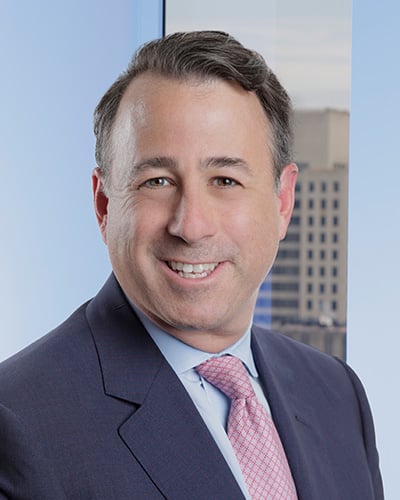On December 3, 2018, the U.S. Supreme Court heard oral argument in Lorenzo v. SEC, which involves an attempt by the SEC to use a “scheme liability” theory under Section 10(b) of the Exchange Act against an individual who did not “make” the misstatements at issue under Janus v. First Derivative Traders, 564 U.S. 135 (2011). The Court’s decision in Lorenzo will address the ability of the SEC and private plaintiffs to bring Section 10(b) claims against those who transmit false and misleading statements that were made by another.
Background
SEC Rule 10(b) implements Section 10(b) of the Securities Exchange Act of 1934, and contains three subsections prohibiting fraudulent conduct in connection with the purchase or sale of securities. Rule 10b-5(a) prohibits employing “any device, scheme, or artifice to defraud”; Rule 10b-5(b) prohibits making any “untrue statement of a material fact”; and Rule 10b-5(c) prohibits engaging in “any act, practice, or course of business which operates . . . as a fraud or deceit upon any person . . . .” Claims asserted under Rule 10b-5(b) address “misstatement liability,” while claims asserted under Rules 10b-5(a) and (c) address “scheme liability.”
In Janus, the Supreme Court ruled in a 5-4 decision that only defendants who are “the maker of a statement” may be held primarily liable for misstatements under Rule 10b-5(b).1 In so ruling, the Court expressed concern that a contrary result could undercut its prior decision in Central Bank of Denver, N.A. v. First Interstate Bank of Denver, N.A., 511 U.S. 164 (1994), which held that private actions under Rule 10b-5 cannot be premised on conceptions of secondary (i.e., aiding-and-abetting) liability. While the Janus decision circumscribed the scope of liability under Rule 10b-5(b), it did not explicitly evaluate the scope of “scheme liability” under Rules 10b-5(a) and (c).
The Lorenzo case involves Section 10(b) claims brought by the SEC against Francis Lorenzo, the director of investment banking at a brokerage firm. The SEC’s claims are based on false and misleading statements in an email that Lorenzo sent to two potential investors. Lorenzo argued that he sent that email at his supervisor’s request, and that he simply “cut and pasted” the false and misleading statements from an email that his supervisor sent him. Following a hearing, an ALJ found that Lorenzo violated Rule 10b-5 of the Exchange Act by transmitting the misstatements (without specifying the subsection or subsections that were violated). The Commission affirmed, ruling that his conduct violated Rules 10b-5(a), (b) and (c).2
On appeal, relying on the Janus decision, the D.C. Circuit overturned the SEC’s finding that Lorenzo violated Rule 10b-5(b), determining that Lorenzo did not “make” the misstatements at issue.3 In a split decision, however, the Court affirmed the SEC’s finding of “scheme liability” against Lorenzo under Rules 10b-5(a) and (c), concluding that he could be held liable for “use” of the misstatements, even if he did not “make” the statements under Rule 10b-5(b). Then-Judge now-Justice Kavanaugh issued a sharp dissent, reasoning that “the “majority opinion creates a circuit split by holding that mere misstatements, standing alone, may constitute the basis for scheme liability.”4 The Supreme Court granted certiorari on June 18, 2018.
Implications
Lorenzo will allow the Supreme Court to weigh in on an issue left open since Janus—whether the rationale of Janus limiting liability to the “makers” of statements prohibits imposing “scheme liability” on secondary actors who merely transmit misstatements “made” by someone else.
Interestingly, Justice Kavanaugh’s participation in the decision below has caused him to recuse himself. The four dissenters in Janus (Justices Breyer, Ginsburg, Kagan and Sotomayor) remain on the bench. Were Justice Kavanaugh to participate, it can be safely assumed that he would follow the reasoning in his dissent below and (based on how the conservative majority voted in Janus), would have potentially provided a fifth vote in favor of reversing Lorenzo. However, with his recusal, the case will be decided by a bench of 8, creating the possibility of a 4-4 split.
Oral argument was held on Monday, December 3, 2018. During the argument, Lorenzo’s counsel argued that affirming the D.C. Circuit’s decision would seriously undermine the holdings in Central Bank and Janus. For its part, the Commission’s counsel argued that Lorenzo’s conduct clearly fell within the plain text of Rules 10b-5(a) and (c), and that the inapplicability of subsection (b) does not preclude a finding of liability under the other subsections.
The justices’ lines of inquiry largely tracked their anticipated positions based on their stated views in Janus. For instance, tracking the SEC’s position, Justice Kagan indicated that subsections (a) and (c) were broadly drafted to create a “belt-and-suspenders” approach to liability that could cover conduct not subject to subsection (b). Likewise, tracking Lorenzo’s arguments, Justice Gorsuch expressed skepticism that the mere sending of an email could satisfy the actus reus requirement for primarily liability under Section 10(b).
Notably, however, Justice Alito (who voted with the majority in Janus) appeared skeptical of Lorenzo’s argument with regard to subsection (c). Justice Alito suggested at one point that Lorenzo’s conduct “fall[s] squarely within the language of [Rule 10b-5](c),” and indicated that the facts of this case might support a finding of primary liability under that subsection.
While it is always difficult to draw conclusions based on oral argument, if Justice Alito joins the Janus dissenters to affirm the D.C. Circuit, the result would be a 5-3 decision that could meaningfully erode the limitations on primary Section 10(b) liability endorsed by the Court in Janus and Central Bank. Indeed, it is difficult to draw a meaningful distinction between the act of sending a false and misleading email drafted by another, which the SEC claims gives rise to primary liability in Lorenzo, and “giving aid to a person who commits a manipulative or deceptive act,” which the Supreme Court held was outside the scope of Section 10(b) in Central Bank.5 In the context of SEC enforcement actions, as a practical matter, affirmance may have limited implications, given the SEC’s ability to assert claims for aiding and abetting under Section 20(e) of the Exchange Act. It could, however, significantly expand the class of potential Section 10(b) defendants in private litigation to those who are better characterized as aiders and abettors. This would be a further erosion of the goals of Congress of limiting securities litigation through the enactment of the Private Securities Litigation Reform Act of 1995. If, on the other hand, the justices adhere to their positions in Janus, the result would be a 4-4 decision that would leave the lower court decision intact, preserving an expansive view of scheme liability in the D.C. Circuit, and leaving final resolution of the implications of the Janus decision on scheme liability for a later decision.
For further information, please contact Eva Carman, Martin Crisp, Douglas Hallward-Driemeier, David Hennes, R. Daniel O’Connor, Gregg Weiner or your usual Ropes & Gray contact.
1 564 U.S. at 142 (emphasis added).
2 Francis V. Lorenzo, SEC Release No. 9762, 111 SEC Docket 1761, 2015 WL 1927763 (Apr. 29, 2015).
3 Lorenzo v. SEC, 872 F.3d 578, 586 (D.C. Cir. 2017).
4 Id. at 600 (Kavanaugh, J., dissenting).
5 511 U.S. at 177.
Authors

Stay Up To Date with Ropes & Gray
Ropes & Gray attorneys provide timely analysis on legal developments, court decisions and changes in legislation and regulations.
Stay in the loop with all things Ropes & Gray, and find out more about our people, culture, initiatives and everything that’s happening.
We regularly notify our clients and contacts of significant legal developments, news, webinars and teleconferences that affect their industries.


